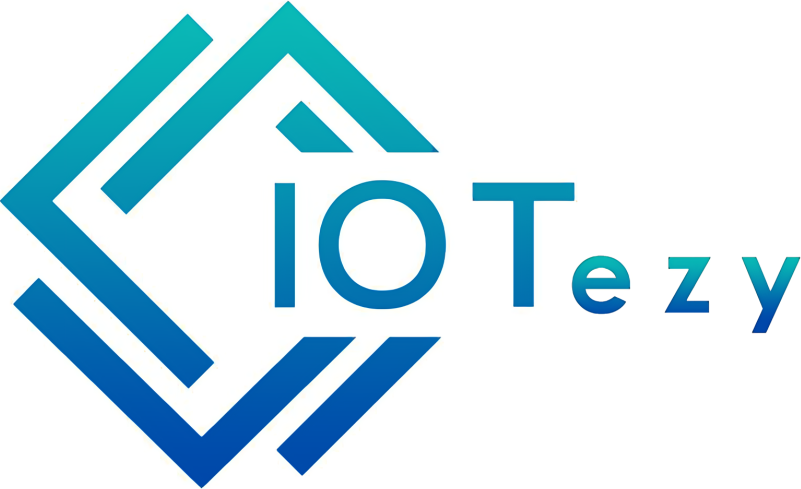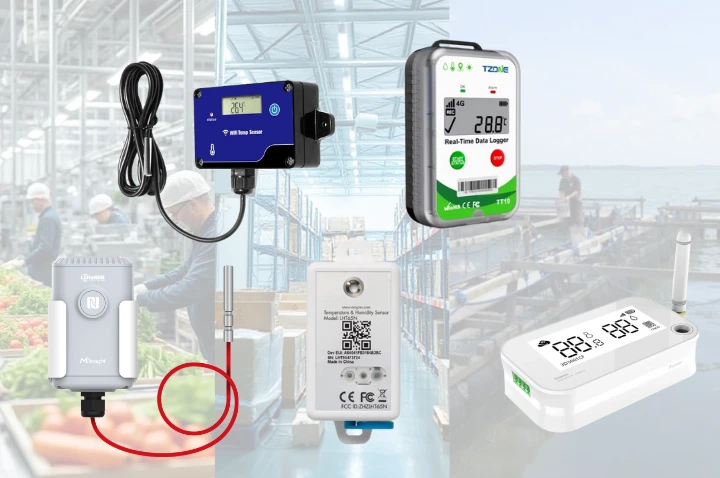A Day in the Life of an IoT Sensor: From Data Point to Dashboard
6:00 AM – First Reading of the Day
Our story begins inside a cold room at a seafood distribution center. The wireless temperature sensor, mounted on a shelf next to crates of freshly harvested fish, takes its first reading of the day: 2.8°C right within the optimal range.
Unlike traditional data loggers that store information for manual retrieval, this wireless sensor instantly transmits its reading via LoRaWAN to a nearby gateway. From there, the data travels to a secure cloud platform, where it becomes accessible in real time.
9:30 AM – Subtle Shift Detected
Outside temperatures are rising. The HVAC system works harder to maintain conditions. The sensor now reads 4.2°C. It continues to log every shift, but it doesn’t sound the alarm yet. It’s programmed with customizable thresholds. The critical limit is 6.0°C.
Still, this trend is visible to the operations manager on their dashboard. Real-time graphs begin to show a gradual incline. Thanks to continuous monitoring, there is no need for manual checks the sensor is already on top of it.
12:15 PM – Alert Triggered
The reading hits 6.1°C. The threshold has been breached.
Instantly, the wireless temperature sensor sends an automated alert to key personnel via SMS, mobile push notification, and email. The alert is not just a number it includes contextual information like time of breach, location, and trend graphs.
The maintenance team is dispatched. A faulty cooling fan is discovered and replaced within 30 minutes well before the seafood’s quality is compromised.
Crisis avoided. Inventory saved.
3:00 PM – Data Aggregation and Learning
Every reading, every alert, and every resolution gets stored in the cloud. The system begins to identify patterns such as recurring HVAC strain during peak hours. With this data, the operations team can schedule preventative maintenance and fine-tune energy usage, improving both reliability and efficiency.
6:00 PM – Dashboard Review and Reporting
As the workday winds down, the facility manager reviews the dashboard on a tablet. They check:
- Daily temperature trends
- Any triggered alerts
- Compliance logs for audits
- System uptime
The clean interface, powered by the sensor’s constant feed of real-time data, provides both peace of mind and actionable insight. There is no guesswork, no paperwork, no delays just visibility.
Midnight – Another Day Begins
The cycle continues.
With 24/7 operation, the wireless temperature sensor does not sleep. It will keep monitoring, logging, and safeguarding every product in the cold chain quietly, tirelessly, and accurately.
Why Wireless Temperature Sensors Are a Game-Changer
What makes this sensor so powerful is not just its ability to read temperatures it is the real-time connectivity, automated alerts, and cloud integration that make it indispensable in cold chain environments.
Key Benefits:
✅ Long battery life and minimal maintenance
✅ No manual data logging or walk-in checks
✅ Instant alerts prevent spoilage and loss
✅ Historical data supports audits and compliance
✅ Scalable across warehouses, vehicles, and remote locations

